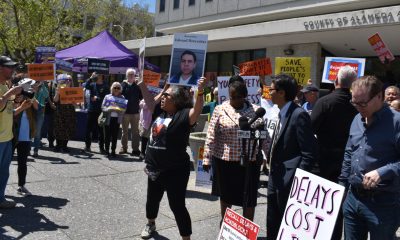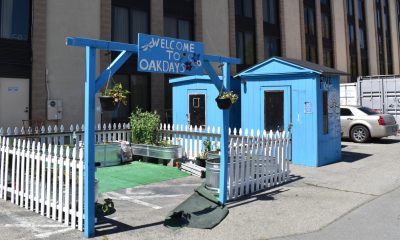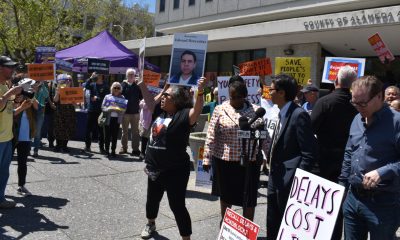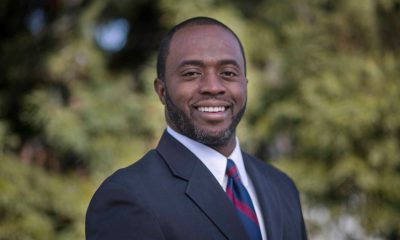Environment
Coastal Commission Approves Sweeping New Environmental Justice Policy to Increase Coastal Protections for All Californians
LOS ANGELES SENTINEL — The California Coastal Commission unanimously approved a landmark environmental justice policy to help ensure equitable access to clean, healthy, and accessible coastal environments for communities disproportionately overburdened by pollution.
By Sentinel News Service
The California Coastal Commission unanimously approved a landmark environmental justice policy to help ensure equitable access to clean, healthy, and accessible coastal environments for communities disproportionately overburdened by pollution.
“Equity demands more. Over the last five years, the commission has questioned whether we are doing enough to provide access for all to our beaches, a right guaranteed under the California constitution,” said Environmental Justice Commissioner Effie Turnbull-Sanders. “Achieving true equity requires us to first understand and own our history of disenfranchisement; then, work diligently and deliberately to create full and inclusive participation in process, policy and benefits. Now the real work begins.”
The commission adopted the policy on Friday, March 8 at the California African American Museum in Los Angeles. Since 1999, California has passed a series bills advancing the concept of environmental justice, which emerged out of the civil rights movement. In recent years, the push to correct long-standing inequities that have disproportionately burdened lower-income communities of color has been increasing with a number of state agencies working to adopt similar policies.
The state’s environmental justice community played an integral role, with more than 30 organizations and stakeholders offering letters of support after their comments strengthened the final draft. Organizations including The City Project, Green Latinos, the California Environmental Justice Alliance, Azul, Central Coastal Alliance United for a Sustainable Economy, and others advocated for the agency to correct long-standing inequities that have disproportionately burdened lower-income communities of color. Assemblymembers Autumn Burke (D-Inglewood), Monique Limon (D-Santa Barbara), and Eduardo Garcia (D-Coachella), also supported passage.
“This is the best environmental justice policy I’ve seen from any agency – state or federal – in my 35 years as a civil rights attorney,” said Robert Garcia, the director of The City Project in Los Angeles. “This is the Magna Carta of coastal justice in California.”
Historian Alison Rose Jefferson set the tone for the policy at Friday’s meeting with a presentation on the African American experience in Southern California. The final policy is the culmination of a two-year effort following the 2016 passage of AB2616 by Assemblywoman Burke, which grants the commission the authority to consider environmental justice in its permitting decisions.
The law also required then Gov. Jerry Brown to appoint an environmental justice commissioner, who is currently Turnbull-Sanders. The environmental justice commissioner helps guide the agency in its diversity, equity and inclusion efforts, as well as its pursuit of a more expansive approach to coastal access.
The commission developed the policy with the input of more than 100 environmental justice groups, California Native American tribes, conservation organizations and individual stakeholders. The policy went through multiple revisions in response to public feedback. Friday’s meeting was the fourth public hearing.
The document includes a policy statement, implementation plan and a statement of principles to help guide staff and commissioners. Topics include climate change, coastal access, housing, tribal concerns, local government, accountability and transparency, participation in the process and more.
The implementation plan calls for the agency to develop environmental justice advocates in every major unit and budget requests to bolster staff hiring, retention and training, Other changes include holding a quarterly conference call between environmental justice stakeholders and the agency’s executive director, scheduling items with significant environmental justice implications close to affected marginalized communities when legal deadlines allow, and encouraging local governments to amend their local coastal programs and other long-range development plans to address environmental justice.
“Environmental justice is at the heart of what the commission has strived to do for 45 years, but until we can extend that mission to marginalized communities throughout California, we will never achieve the Coastal Act’s vision,” said commission Chair Dayna Bochco. “This new policy will help us keep that promise.”
Established in 1972 by a voter initiative, the commission has a mandate to protect and preserve the California coast for current and future generations by regulating development with local government. Under the new policy, in addition to traditional Coastal Act considerations, the agency can now consider the impacts of a proposed project on an underserved community. For example, if an electrical plant was proposed in the city of Oxnard, the agency could look how this might affect this community already overburdened by industrial development.
The State Lands Commission recently passed an environmental justice policy and the Coastal Conservancy and the Bay Area Conservation and Development Commission are also working on similar policies. In addition, the Attorney General’s office recently added an environmental justice unit and 18 state agencies have sent teams to Sacramento for intense ongoing racial equity training with the Government Alliance on Race and Equity.
“The development of this policy has been such a humbling and inspiring journey for us all at the agency,” said Executive Director Jack Ainsworth. “It’s the future of this agency and, frankly, the right thing to do.”
Bay Area
East Bay Regional Park District Issues Rattlesnake Advisory
The East Bay Regional Park District released an advisory today on rattlesnakes, which emerge from winter hibernation in early spring and become more active. Warm weather can bring more potential for rattlesnake encounters with humans and dogs, particularly along trails and roads.
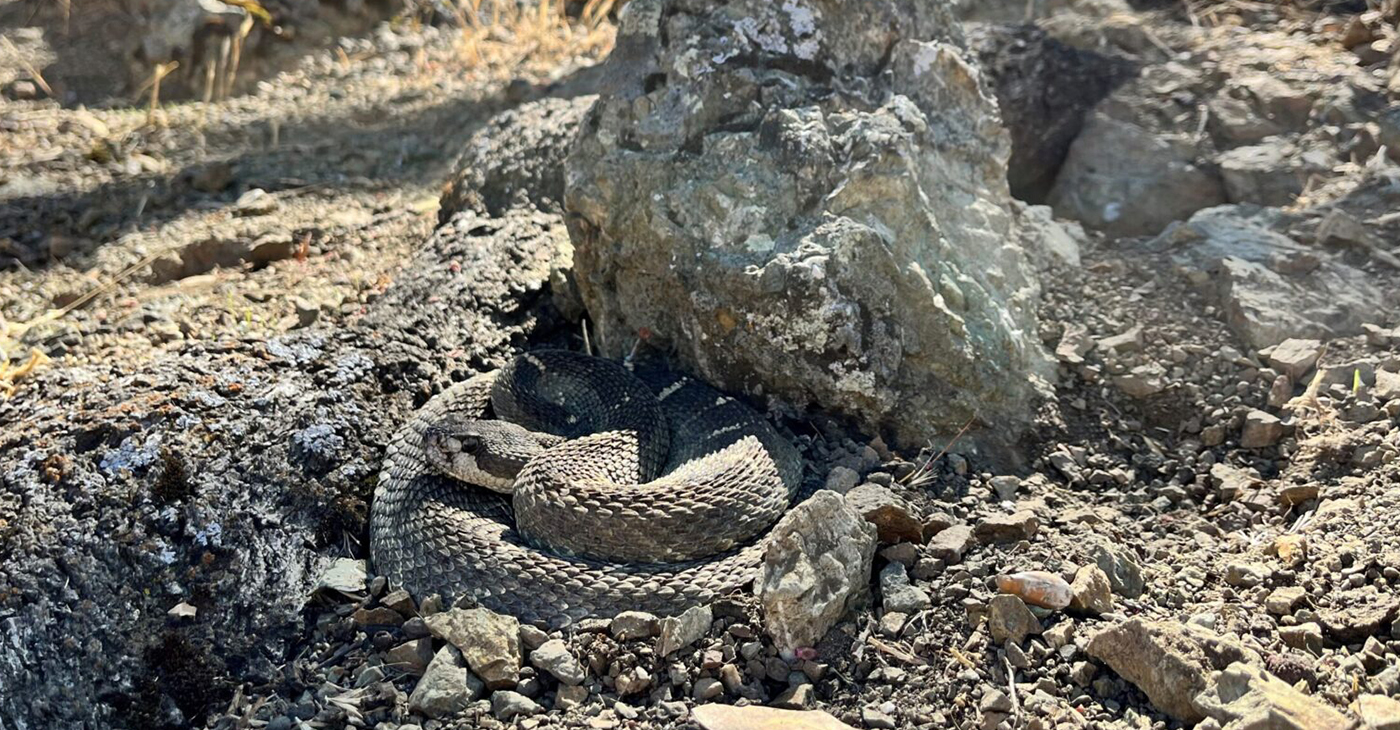
The Richmond Standard
The East Bay Regional Park District released an advisory today on rattlesnakes, which emerge from winter hibernation in early spring and become more active.
Warm weather can bring more potential for rattlesnake encounters with humans and dogs, particularly along trails and roads.
Visitors are encouraged to avoid hiking alone in case of an emergency, to scan the ground ahead as they walk, jog or ride, stay on trails avoiding tall grass, and to look carefully around and under logs and rocks before sitting down. Keep your dog on your leash to be extra safe, park officials said.
If you encounter a rattlesnake, leave it alone – it is unlawful to capture or harm one. Move carefully and slowly away or around it and give it plenty of space, park officials said.
Those who are bitten by a rattlesnake are instructed to stay calm by lying down with the affected limb lower than the heart, then having someone call 911.
Getting medical attention is critical.
Those bitten should not use tourniquets, “sucking,” or snake bite kits. If you are by yourself, walk calmly to the nearest source of help to dial 911, do not run.
If bitten by any other type of snake, wash the wound with soap and water or an antiseptic and seek medical attention.
Not sure what bit you? Check the bite for two puncture marks (in rare cases one) associated with intense, burning pain, which is typical of a rattlesnake bite. Other snakebites can leave marks without associated burning pain.
The Northern Pacific rattlesnake is the species found in East Bay Regional Parks. Snakes are important to the natural environment, helping to control rodents and other reptile populations. But enjoy them from afar.
For more information, download the Park District’s Common Snakes brochure or watch our Gopher Snake or Rattlesnake video to learn how to tell the difference between rattlesnakes and gopher snakes. Additional information is available at ebparks.org/safety/wildlife-encounters.
Activism
Oakland’s ‘Green the Church,’ Others, Host a Climate Revival
On April 20, Oakland’s Green The Church California (GTC) and the Center For Food, Faith and Justice will celebrate Earth Day and present a Climate Revival event titled “Growing Healthy Communities From Soil To The Soul” at McGee Avenue Baptist Church at 1640 Stuart St, Berkeley, CA. The day will include inspiring talks, interactive workshops, networking opportunities, and a special panel on Food Sovereignty and Global Food Resilience.

Growing Healthy Communities from Soil to the Soul in Berkeley
By Y’Anad Burrell
On April 20, Oakland’s Green The Church California (GTC) and the Center For Food, Faith and Justice will celebrate Earth Day and present a Climate Revival event titled “Growing Healthy Communities From Soil To The Soul” at McGee Avenue Baptist Church at 1640 Stuart St, Berkeley, CA,
The day will include inspiring talks, interactive workshops, networking opportunities, and a special panel on Food Sovereignty and Global Food Resilience.
The keynote speaker is Rev. Danté R. Quick, PhD, senior pastor of First Baptist Church of Lincoln Gardens in Somerset, N.J. Quick is well known in the Bay Area, having served for more than 10 years as pastor of Friendship Missionary Baptist Church in Vallejo, CA.
Green The Church, founded in 2010 by Rev. Dr. Ambrose Carroll, Sr., and headquartered in Oakland, helps galvanize Black churches and their local communities and leaders to address issues critical to populations historically disengaged from conversations around pollution and health, climate change, and sustainability and energy efficiency.
The organization collaborates with major environmental, sustainability, food security, faith, and community-based non-profit organizations, and is committed to “creation justice”—care and justice for God’s people and the planet—and building the Beloved Community.
Environmental justice has long been a pressing concern for communities of color who bear the brunt of pollution and ecological degradation. Climate change exacerbates these issues, disproportionately impacting vulnerable communities. Recognizing this urgency, Black churches across the country are taking action.
With deep roots in the African American community and its commitment to social justice, the Black Church has become an essential advocate for sustainable practices and policies.
Over the past 14 years, in a powerful collaboration with significant environmental, sustainability, food security, faith, and community-based non-profit organizations, GTC has created a cadre of Black churches engaging in the environmental justice, climate, and sustainability movement.
GTC presently works with more than 1,000 pastors and congregations across the U.S., and groups in the Bahamas, Ghana, Nigeria, and the UK, showing that we can make a difference together.
The partnership between environmental justice advocates and the Black Church extends beyond individual congregations. Green The Church provides resources and support for faith communities seeking to address climate change and promote environmental justice.
Through collaboration, initiatives such as energy efficiency programs, solar installations, and environmental education have been implemented in Black churches nationwide. These efforts reduce the carbon footprint and save money on energy bills, benefiting the congregations and their communities.
The involvement of the Black Church in the fight against climate change is not just a participation, it’s a powerful message that galvanizes action across communities.
By integrating environmental justice into their ministry, Black churches are demonstrating that addressing climate change is not only a matter of science but also of social and moral responsibility, inspiring change at a grassroots level.
For more information, go to: www.greenthechurch.org.
Bay Area
Richmond’s Growing Bay Trail Boasts Bountiful Beauty
The Standard recently enjoyed a sunny-day stroll through Richmond’s Barbara and Jay Vincent Park and an exquisite section of the city’s ample share of San Francisco Bay Trail. Near Vincent Park’s entrance, the Bay Trail offers locals a front-row view of Richmond’s Marina, with an eclectic mix of boats and some of the city’s shoreline eateries like Lara’s Fine Dining and Anh Restaurant & Bar.
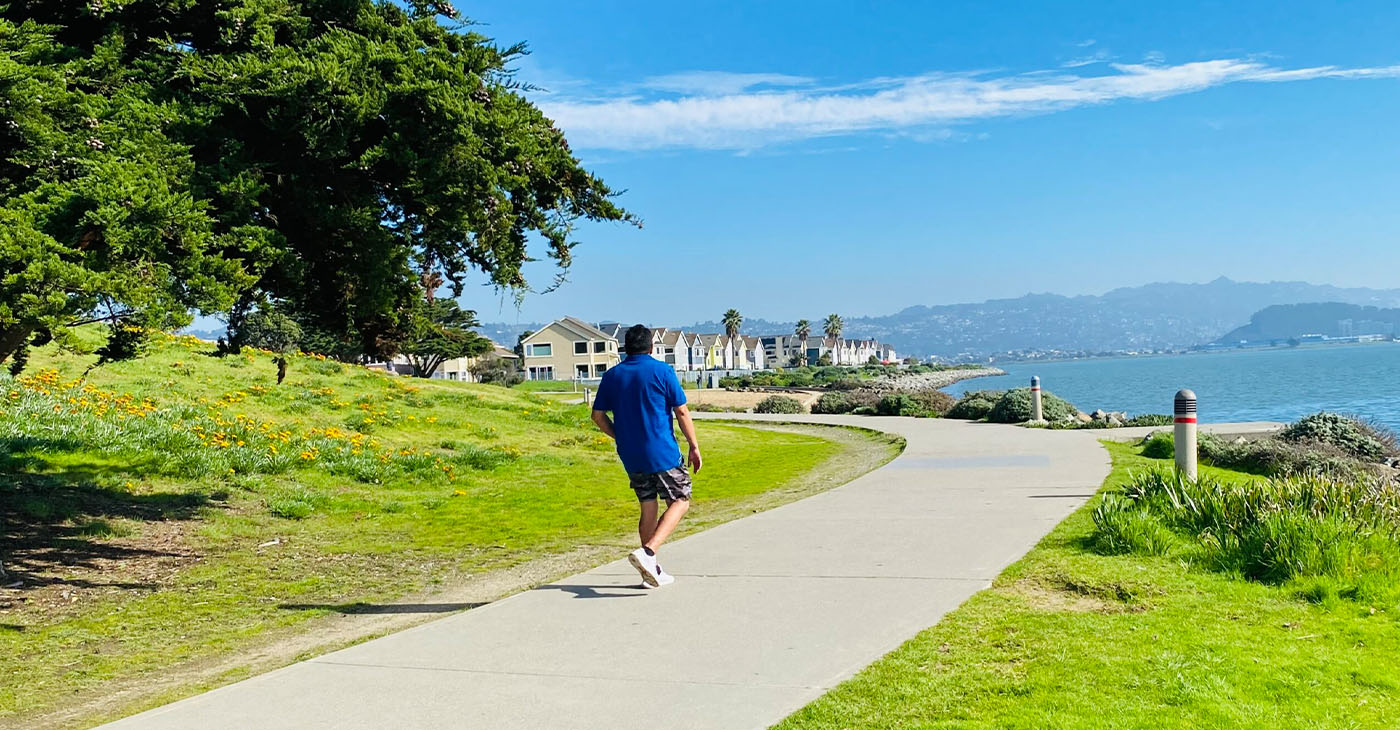
By Kathy Chouteau
The Richmond Standard
When was the last time you used the Bay Trail in Richmond?
The Standard recently enjoyed a sunny-day stroll through Richmond’s Barbara and Jay Vincent Park and an exquisite section of the city’s ample share of San Francisco Bay Trail.
Near Vincent Park’s entrance, the Bay Trail offers locals a front-row view of Richmond’s Marina, with an eclectic mix of boats and some of the city’s shoreline eateries like Lara’s Fine Dining and Anh Restaurant & Bar.
Stroll further into the park on the trail and you’ll spy the Craneway Pavilion and Rosie the Riveter Park’s Visitor Center across the water, as well as ample geese—and if your timing is right—a few sailboarders getting ready to launch into San Francisco Bay.
A great kids’ playground and BBQ grills also await in the well-used park. Follow the trail around the western bend to see the park’s small but picturesque beach and clear-day views of San Francisco, the Golden Gate Bridge and more. The Bay Trail will lead you to Berkeley and beyond if you’ve got the energy.
To this reporter, who has spent lots of time here, Vincent Park and the Bay Trail are some of Richmond’s most stunning outdoor gifts for its people.
‘Gifts’ because our outdoor views don’t cost a thing yet deliver a quiet joy ready to reenergize you for the week. And for your kids and four-legged friends, there’s a world of sea creatures, shells, and other outdoor ephemera to discover after a dig in the sand.
Take it from someone who originally hails from a land-enclosed state, and a city where the most interesting hyper-local views were of the Bethlehem Steel mill in Bethlehem, Pa.
While my native city’s steel might have been used to build the Golden Gate Bridge and WWII ships, and this reporter has deep love for her hometown, trust me when I say that people in ‘the Rich’ are privy to some of the best views I’ve ever seen in our country.
According to the Trails for Richmond Action Committee (TRAC), Richmond has more than 32 miles of shoreline, which is more than any other city on San Francisco and San Pablo Bays. The Bay Trail currently has more than 300 miles completed of 500 planned for the trail around both bays. Enjoy Richmond’s bounty!
Want to learn more about the Bay Trail in Richmond? Check out TRAC.
-

 Community3 weeks ago
Community3 weeks agoFinancial Assistance Bill for Descendants of Enslaved Persons to Help Them Purchase, Own, or Maintain a Home
-

 Business3 weeks ago
Business3 weeks agoV.P. Kamala Harris: Americans With Criminal Records Will Soon Be Eligible for SBA Loans
-

 Activism3 weeks ago
Activism3 weeks agoOakland Post: Week of April 10 – 16, 2024
-

 Community3 weeks ago
Community3 weeks agoAG Bonta Says Oakland School Leaders Should Comply with State Laws to Avoid ‘Disparate Harm’ When Closing or Merging Schools
-

 Activism1 week ago
Activism1 week agoOakland Post: Week of April 24 – 30, 2024
-

 Community2 weeks ago
Community2 weeks agoRichmond Nonprofit Helps Ex-Felons Get Back on Their Feet
-

 Community2 weeks ago
Community2 weeks agoOakland WNBA Player to be Inducted Into Hall of Fame
-

 Community2 weeks ago
Community2 weeks agoRPAL to Rename Technology Center for Retired Police Captain Arthur Lee Johnson

